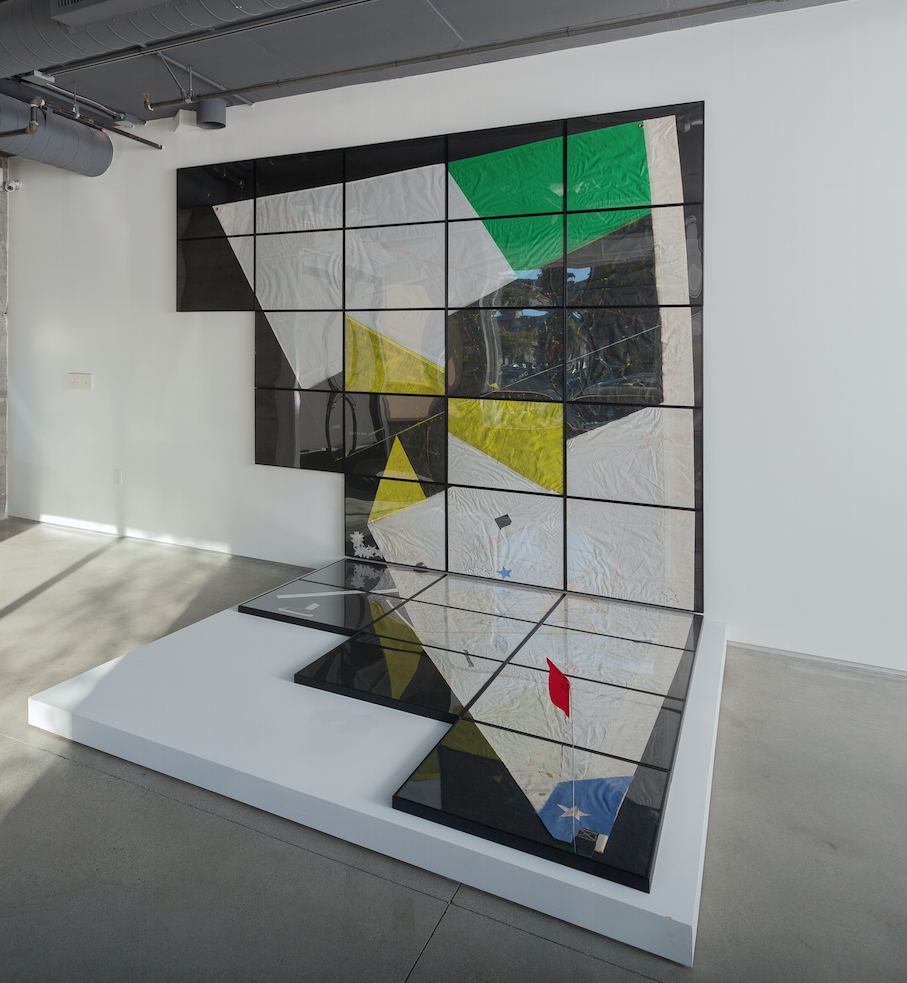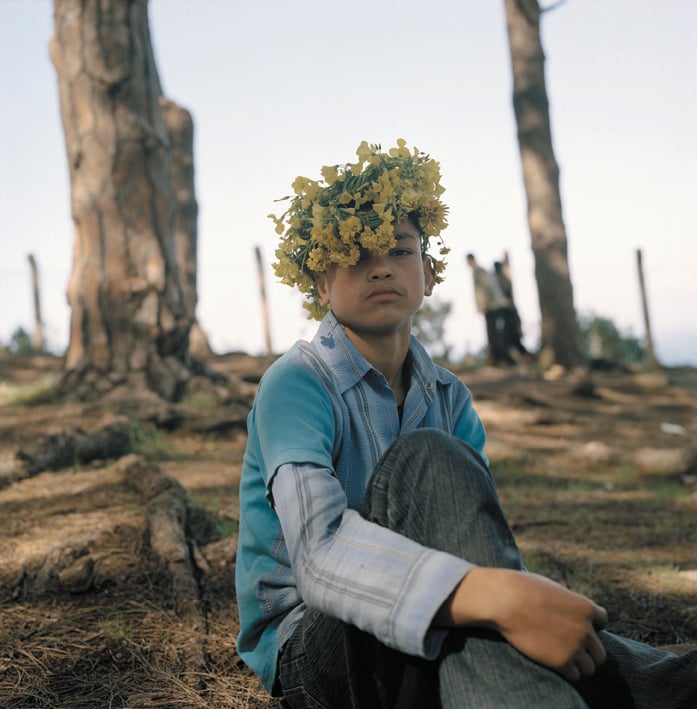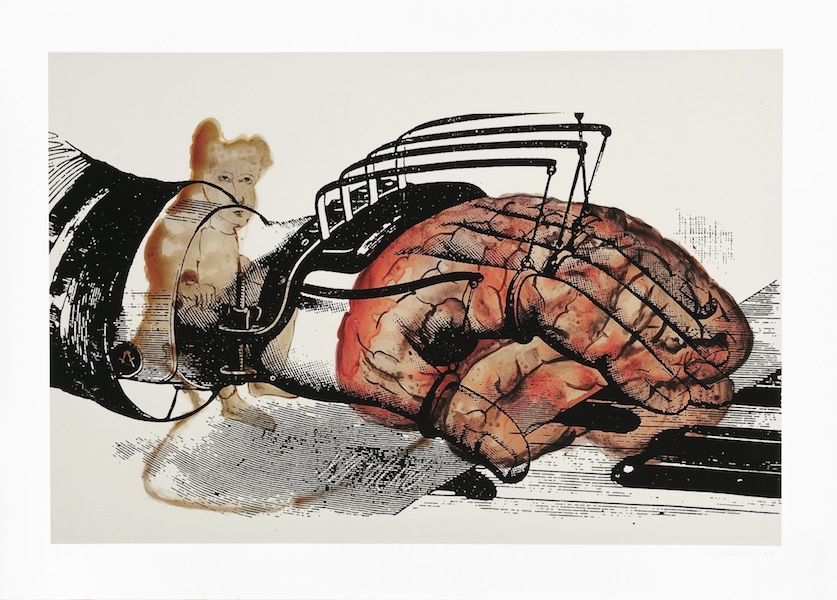Untitled (Don’t See, Don’t Hear, Don’t Speak)
2008 - Photography (Photography)
38H x 96W inches
Shilpa Gupta
The three monkeys in Don’t See, Don’t Hear, Don’t Speak are a recurring motif in Gupta’s work and refer to the Japanese pictorial maxim of the “three wise monkeys” in which Mizaru covers his eyes to “see no evil,” Kikazaru covers his ears to “hear no evil,” and Iwazaru covers his mouth to “speak no evil.” For the various performative and photographic works that continue this investigation and critique of the political environment, Gupta stages children and adults holding their own or each other’s eyes, mouths and ears. These images suggest that seemingly mobilized societies can actually produce more fear and myths, and that no real freedom is ensured. Instead of facilitating the free circulation of ideas, “advanced” political and technological systems often generate more cultural clichés, wars, and terror.
Mumbai-based Shilpa Gupta’s practice crosses disciplines and media to include interactive videos, websites, objects, photographs, sound, and public performances. Probing and examining themes such as desire, religion, tradition, gender, global capitalism, social injustice, security, borders, and power, Gupta actively engages herself with the political and cultural world around her.
Colors:
Other related works, blended automatically

© » KADIST
Shilpa Gupta
2014These hand drawn maps are part of an ongoing series begun in 2008 in which Gupta asks ordinary people to sketch outlines of their home countries by memory...

© » KADIST
Enrique Ramirez
2017Ramirez’s The International Sail is the fifth in a series that features an upside-down worn out, mended and fragmented boat sail...

© » KADIST
Enrique Ramirez
2019Enrique Ramirez’s La Memoria Verde is a work of poetry, politics, and memory created in response to the curatorial statement for the 13th Havana Biennial in 2019, The Construction of the Possible ...

© » KADIST
Xiaoyun Chen
2006The image of rusted nails, nuts and bolts as shrapnel sandwiched between a fried Chicken burger highlights the contrast between decadence and destruction...

© » KADIST
Yto Barrada
2007This photograph is part of the series titled “Iris Tingitana project” (2007) focusing on the disappearance of the iris...

© » KADIST
Wong Hoy Cheong
2009Days of Our Lives: Reading is from a series of work was created for the 10th Biennale de Lyon by the artist...

© » KADIST
Hank Willis Thomas
2012Thomas’ lenticular text-based works require viewers to shift positions as they view them in order to fully absorb their content...

© » KADIST
Xiaoyun Chen
2014The central point of Vanishing Point is the most direct physiological reaction of the body to the environment...

© » KADIST
Hank Willis Thomas
2014Shot in black and white and printed on a glittery carborundum surface, Black Hands, White Cotton both confronts and abstracts the subject of its title...

© » KADIST
Eko Nugroho
2009Nugroho’s installations and performances have their roots in the shadow puppet rituals in Indonesia, particularly the Javanese Wayang tradition whose essence is in the representation of the shadows...

© » KADIST
Nalini Malani
1996Memory: Record/Erase is a stop-motion animation by Nalini Malani based on ‘The Job,’ a short story by celebrated German poet and playwright Bertolt Brecht...

© » KADIST
Glenn Ligon
2000Glenn Ligon’s diptych, Condition Repor t is comprised of two side-by-side prints...

© » KADIST
Hank Willis Thomas
2012Bread and Roses takes its name from a phrase famously used on picket signs and immortalized by the poet James Oppenheim in 1911...

© » KADIST
Simon Starling
2007Invited in 2007 to the Museum Folkwang in Essen (Germany), Simon Starling questioned its history: known for its collections and particularly for its early engagement in favor of modern art (including the acquisition and exhibition of works by Cézanne, Gauguin, Van Gogh, Matisse), then destroyed during the Second World War, the museum was pillaged for its masterpieces of ‘degenerate art’ by the nazis...

© » KADIST
Julio Cesar Morales
2008The video Interrupted Passage presents a performance Morales staged in the former home of Mariano Guadalupe Vallejo, a mid-nineteenth-century Mexican general serving in California...





